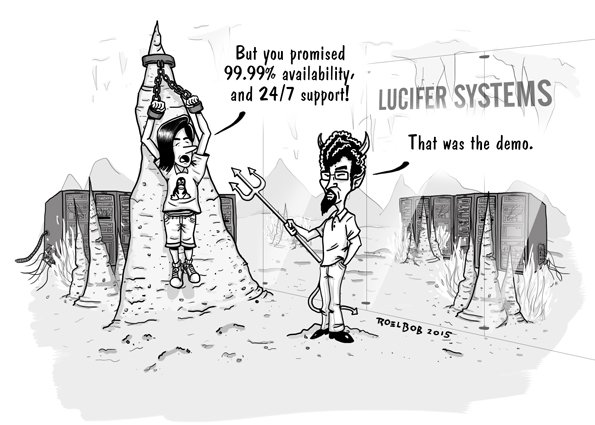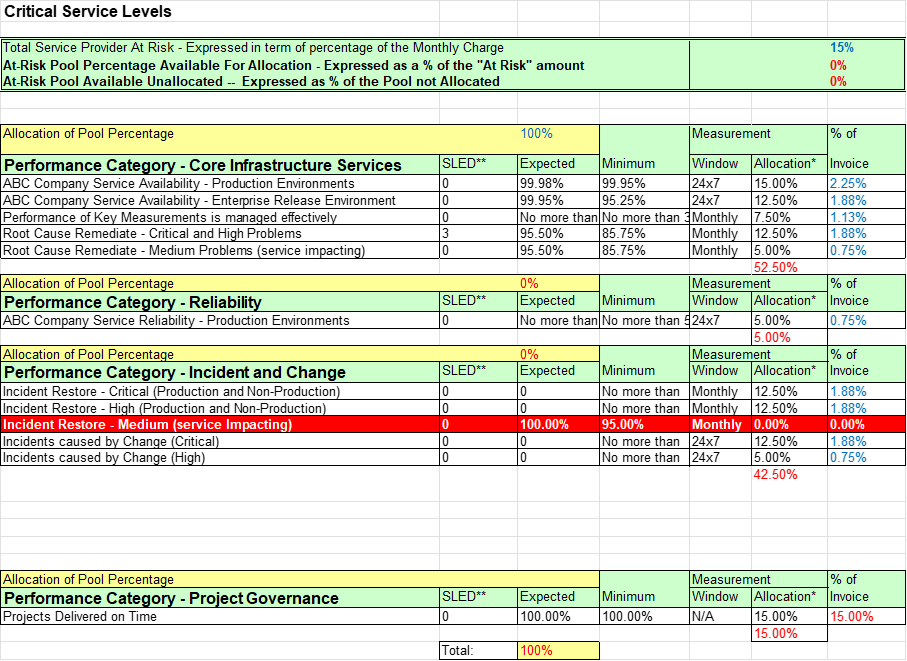
Service Level Credit – Why is it Important?
Service Level Credit
In IT service agreements, service level credit is commonly incorporated to provide customers with compensation in case the service provider fails to meet the predefined service levels. Essentially, this means offering the customer a credit towards future payments as a form of reimbursement for the service provider’s inability to meet the mutually agreed performance standards.
Key elements of Service Level credit
A Service Level Credit for the IT industry managed services typically includes the following information. We can divide it into different sections to focus on each. These sections may be documents, reports or processes.
Service Level Agreement (SLA) Details
This document normally outlines the specific service level targets and supplier performance metrics agreed upon between the service provider and the customer. It includes details such as response time, uptime, resolution time, and other key performance indicators (KPIs) that define the quality of service. This is the primary document for calculations of Service Level Credit.

SLA Breach Identification
Highlight any instances where the service provider failed to meet the agreed-upon service levels or performance standards. It identifies the specific SLA targets that were not achieved and provides a clear description of the breach.
Impact Analysis
Examines the impact of the SLA breach on the customer’s business operations. Assess the consequences of the service level failure and quantifies the impact in terms of downtime, lost productivity, financial losses, or any other relevant metrics.
Service Credit Calculation
The report outlines the methodology used to calculate the service credits owed to the customer. It typically includes the formula or calculation method specified in the SLA for determining the compensation amount based on the severity and duration of the SLA breach.

Service Credit Applied
Organizations also calculate the actual service credits that will be applied to the customer’s account as compensation for the SLA breach. It specifies the amount or percentage of credit to be deducted from future payments or invoices.
Root Cause Analysis
The report may include a root cause analysis of the SLA breach, identifying the underlying reasons or factors that led to the service level failure. This analysis helps in understanding the issues and taking corrective actions to prevent similar incidents in the future.
Corrective Actions
If any corrective measures were implemented to address the SLA breach, this section provides details of the actions taken by the service provider to rectify the situation and prevent recurrence.
Customer Feedback and Resolution
Customer perception is very important when discussing resolutions. If the customer provided feedback or raised any concerns regarding the SLA breach, this should be captured and should include a summary of their input and how the service provider resolved or addressed those concerns.
Forward Planning
Including this section, which outlines any preventive measures or improvements planned by the service provider to enhance service delivery and avoid future SLA breaches. It may include strategies for process improvements, infrastructure upgrades, or staff training.
Create a report with a summary and overall assessment of the SLA breach, highlighting the steps taken, the compensation provided, and the commitment to delivering better service in the future. An example is shown below for critical service levels. (SLED is Service Level Effective Date)

Conclusion
Service Level Credit is an important aspect to keep a service level provider in check, to ensure they keep up their delivery standards. Missing those performance standards translates to financial penalties.
Authored by Vijay Chander – All rights reserved – 2023

